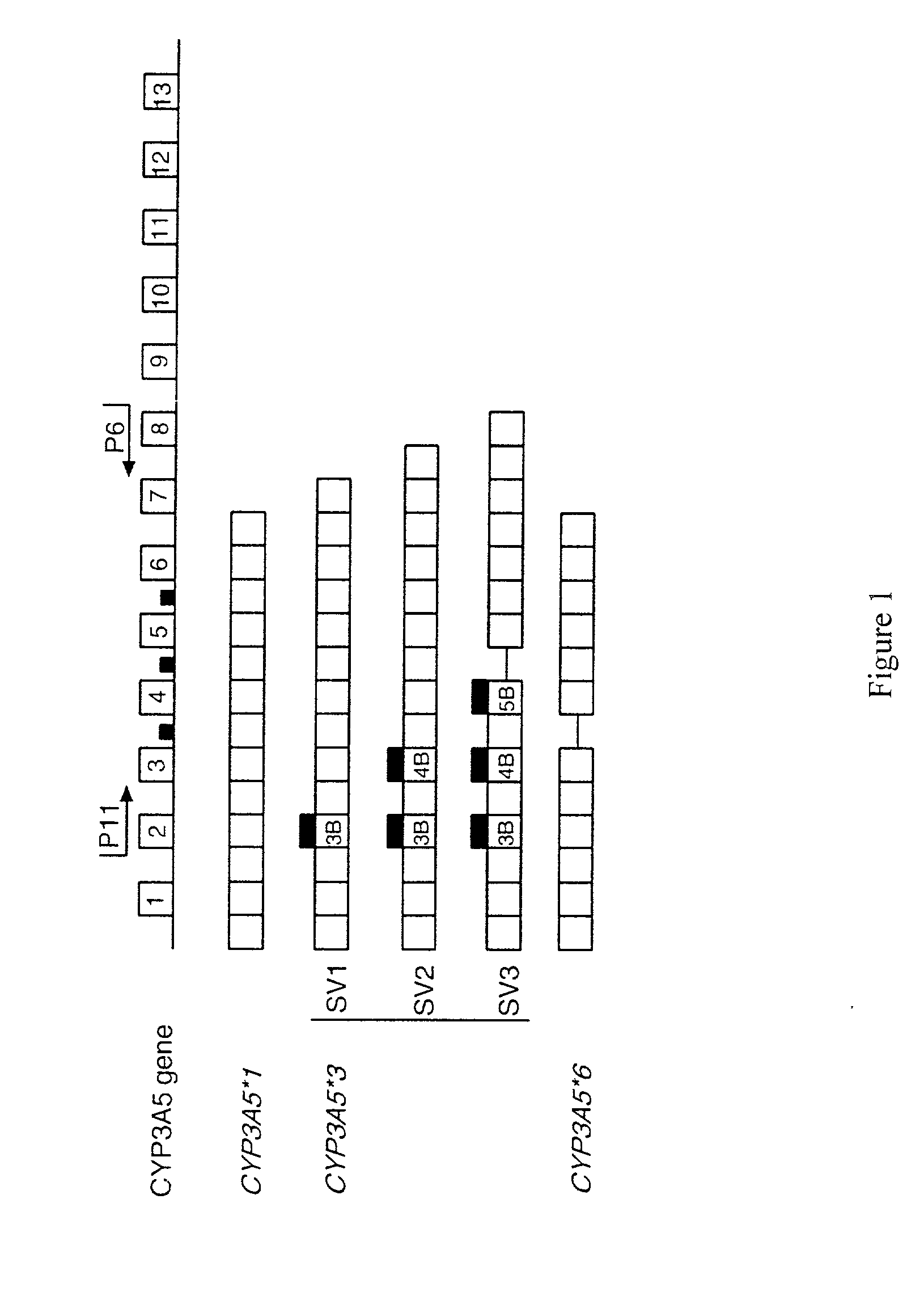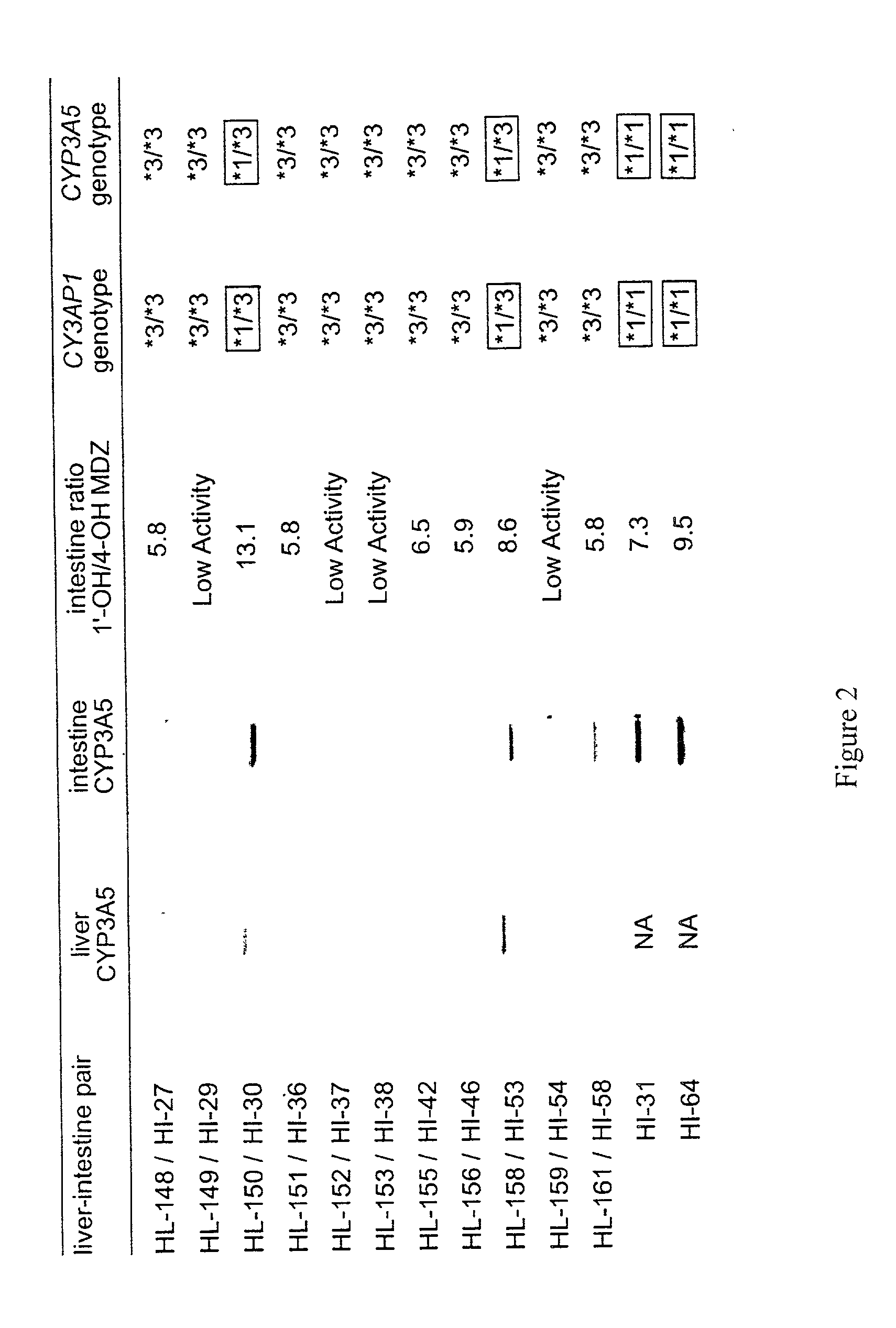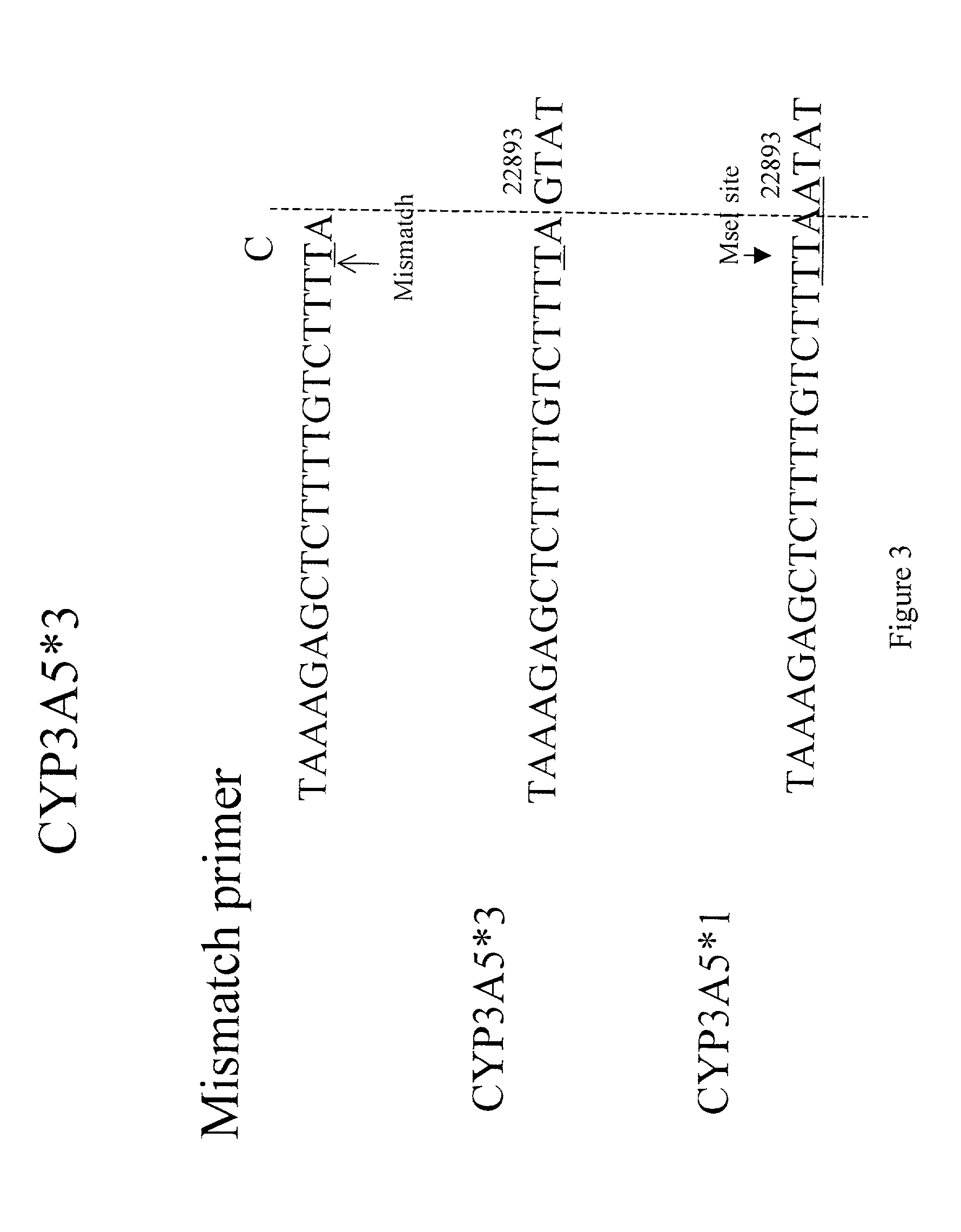Genotyping assay to predict CYP3A5 phenotype
a gene typing and phenotype technology, applied in the field of gene typing assay to predict cyp3a5 phenotype, can solve the problems of nephrotoxicity or graft organ rejection, increased number of man-made and natural environmental substances at an exponential rate, and toxicity to exposed individuals
- Summary
- Abstract
- Description
- Claims
- Application Information
AI Technical Summary
Problems solved by technology
Method used
Image
Examples
example 2
Sequence Diversity in CYP3A Promoters and Characterization of the Genetic Basis for Polymorphic CYP3A5 Expression
[0232] Abstract
[0233] Variation in the CYP3A enzymes, which act in drug metabolism, influences levels of circulating steroids and therapeutic responses to half of all oxidatively metabolized drugs. CYP3A activity is the sum activity of the family of CYP3A genes, including CYP3A5, which is polymorphically expressed at high levels in a minority of Americans of European descent and Europeans (hereinafter referred to as Caucasians). Only people with at least one CYP3A5*1 allele express large amounts of CYP3A5. Our findings show that single-nucleotide polymorphisms (SNPs) in CYP3A5*3 and CYP3A5*6 that cause alternative splicing and protein truncation result in the absence of CYP3A5 from tissues of some people. CYP3A5 was more frequently expressed in livers of African Americans (60%) than in those of Caucasians (33%). Because CYP3A5 represents at least 50% of the total hepatic ...
example 3
PCR-RFLP Based Method for Identifying CYP3A5*1, CYP3A5*3 and CYP3A5*6 Alleles
[0271] We developed a mismatched PCR-RFLP based method to characterize the CYP3A5*1, CYP3A5*3, CYP3A5*6 polymorphism suitable for large scale screening and clinical testing applications. To distinguish the CYP3A5*1 and CYP3A5*3 alleles, nested PCR is performed using a mismatched forward primer 5020.sub.--22871 (f) (5'-TAAAGAGCTCTTTTGTCTTTTA-3') (SEQ ID NO:33) and the reverse primer 5020.sub.--23205 (r) 5'-CATTCTTTCACTAGCACTGTTC-3' (SEQ ID NO:27). The mismatched forward primer introduces a mismatch "T" (denoted underlined) at nucleotide 22891 in all CYP3A5 alleles, but creates a unique Tru9I and / or MseI restriction site in the CYP3A5*1 expressor-22893A allele (TTAA), but not in the non-expressor-G allele (TTAG). Susceptibility of the PCR product to cleavage by Tru9I and / or MseI indicates the presence of the CYP3A5*1 allele. The sequences of the primers and the PCR-RFLP method are diagramed in FIGS. 3 and 4. ...
PUM
| Property | Measurement | Unit |
|---|---|---|
| Fraction | aaaaa | aaaaa |
| Fraction | aaaaa | aaaaa |
| Fraction | aaaaa | aaaaa |
Abstract
Description
Claims
Application Information
 Login to View More
Login to View More - R&D
- Intellectual Property
- Life Sciences
- Materials
- Tech Scout
- Unparalleled Data Quality
- Higher Quality Content
- 60% Fewer Hallucinations
Browse by: Latest US Patents, China's latest patents, Technical Efficacy Thesaurus, Application Domain, Technology Topic, Popular Technical Reports.
© 2025 PatSnap. All rights reserved.Legal|Privacy policy|Modern Slavery Act Transparency Statement|Sitemap|About US| Contact US: help@patsnap.com



